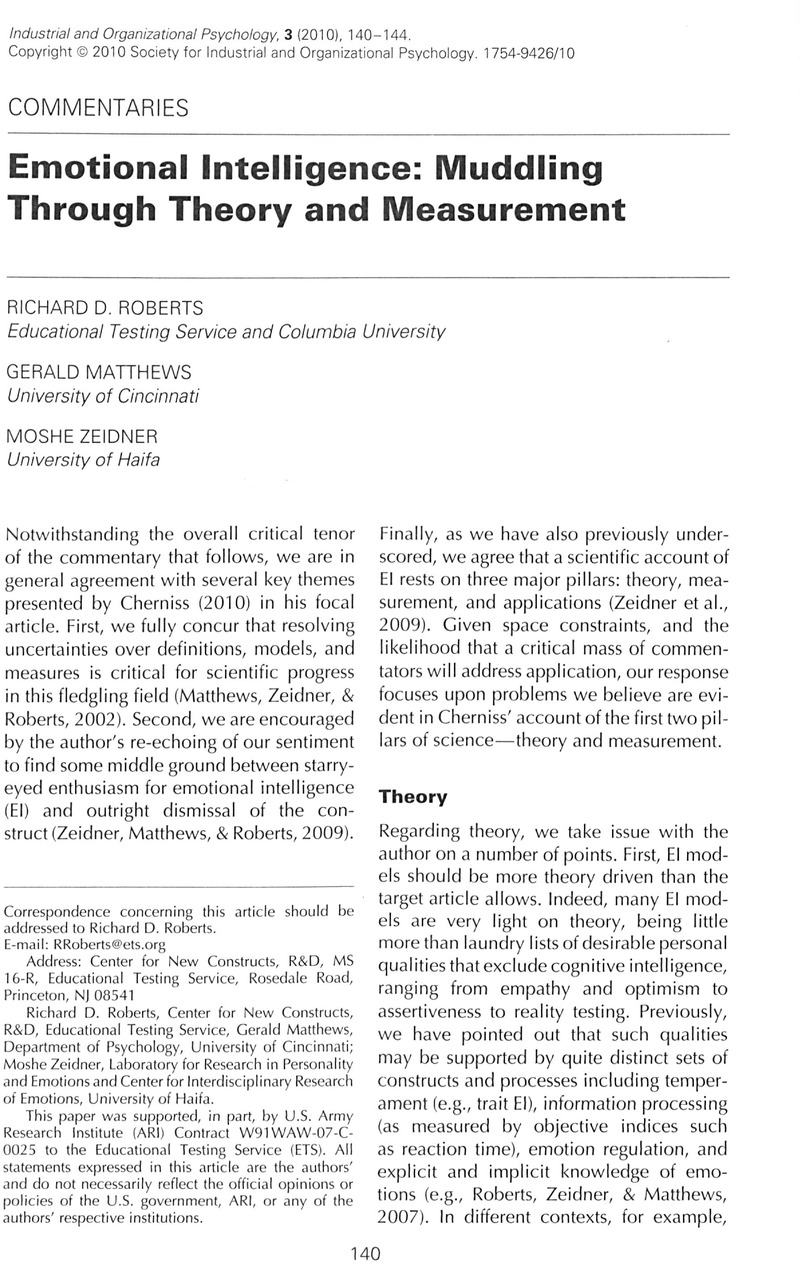Crossref Citations
This article has been cited by the following publications. This list is generated based on data provided by
Crossref.
Cherniss, Cary
2010.
Emotional Intelligence: New Insights and Further Clarifications.
Industrial and Organizational Psychology,
Vol. 3,
Issue. 2,
p.
183.
Dejoux, Cécile
and
Wechtler, Heidi
2012.
Compétences émotionnelles et motivations de carrière comme déterminants de l'adaptation à l'international : cas de l'Alliance Française.
Revue de gestion des ressources humaines,
Vol. N° 83,
Issue. 1,
p.
45.
Körber, Moritz
and
Bengler, Klaus
2013.
Measurement of momentary user experience in an automotive context.
p.
194.
Ybarra, Oscar
Kross, Ethan
Seungjae Lee, David
Zhao, Yufang
Dougherty, Adrienne
and
Sanchez-Burks, Jeffrey
2013.
Advances in Positive Organizational Psychology.
Vol. 1,
Issue. ,
p.
167.
McCleskey, Jim
2014.
Emotional intelligence and leadership.
International Journal of Organizational Analysis,
Vol. 22,
Issue. 1,
p.
76.
Grunes, Paul
Gudmundsson, Amanda
and
Irmer, Bernd
2014.
To what extent is the Mayer and Salovey (1997) model of emotional intelligence a useful predictor of leadership style and perceived leadership outcomes in Australian educational institutions?.
Educational Management Administration & Leadership,
Vol. 42,
Issue. 1,
p.
112.
Snowden, Austyn
Stenhouse, Rosie
Young, Jenny
Carver, Hannah
Carver, Fiona
and
Brown, Norrie
2015.
The relationship between emotional intelligence, previous caring experience and mindfulness in student nurses and midwives: a cross sectional analysis.
Nurse Education Today,
Vol. 35,
Issue. 1,
p.
152.
Keefer, Kateryna V.
2015.
Self-Report Assessments of Emotional Competencies.
Journal of Psychoeducational Assessment,
Vol. 33,
Issue. 1,
p.
3.
Michelangelo, Lori
2015.
The overall impact of emotional intelligence on nursing students and nursing.
Asia-Pacific Journal of Oncology Nursing,
Vol. 2,
Issue. 2,
p.
118.
Doherty, Eva M.
Walsh, Rosemary
Andrews, Leanne
and
McPherson, Susan
2017.
Measuring Emotional Intelligence Enhances the Psychological Evaluation of Chronic Pain.
Journal of Clinical Psychology in Medical Settings,
Vol. 24,
Issue. 3-4,
p.
365.
Pekaar, Keri A.
Bakker, Arnold B.
van der Linden, Dimitri
and
Born, Marise Ph.
2018.
Self- and other-focused emotional intelligence: Development and validation of the Rotterdam Emotional Intelligence Scale (REIS).
Personality and Individual Differences,
Vol. 120,
Issue. ,
p.
222.
2018.
The Emerald Review of Industrial and Organizational Psychology.
p.
767.
Georgiou, Konstantina
Gouras, Athanasios
and
Nikolaou, Ioannis
2019.
Gamification in employee selection: The development of a gamified assessment.
International Journal of Selection and Assessment,
Vol. 27,
Issue. 2,
p.
91.
Boadi, Evans Asante
He, Zheng
Boadi, Eric Kofi
Antwi, Samuel
and
Say, Joy
2020.
Customer value co-creation and employee silence: Emotional intelligence as explanatory mechanism.
International Journal of Hospitality Management,
Vol. 91,
Issue. ,
p.
102646.
